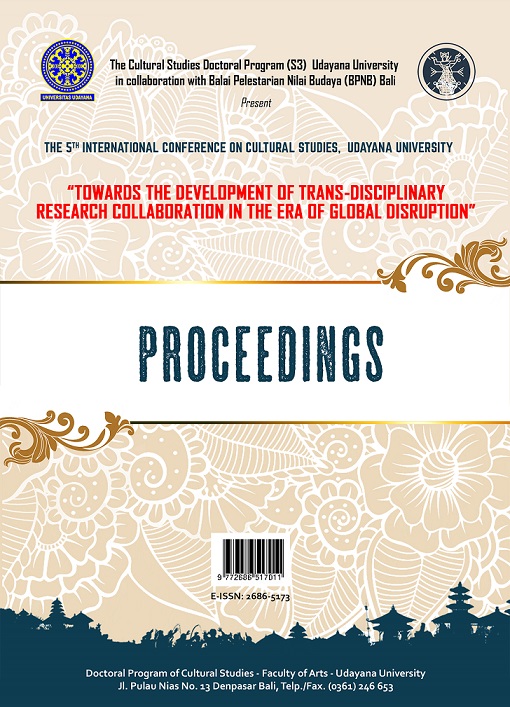MARGINALIZATION OF GENGGONG TRADITIONAL ART, BATUAN SUKAWATI VILLAGE IN THE GLOBAL ERA
Abstract
The popularity of performing arts in Bali shows that there is an imbalance between classical art and profane art in the global era. Genggong performance art is one of the classic art heritage works that was born in 1973 in Batuan Village. An alarming condition occurs due to the low opportunities available. The imbalance of function resulted in the condition of the Genggong art being fragile.
The issue of moving cultural heritage that is important for regional identity is often not able to touch the problems that occur in the Genggong Village, Batuan performance art. On the other hand, the rise of other traditional arts activities that are more majestic are sticking out in several prestigious arenas. The imbalance of attention that increasingly triggers the opportunity for inequality in opportunities has been proven by the scarcity of Genggong art present as part of the cultural property of the people of Batuan and Bali in general.
Through this study, we try to make a qualitative approach because the data used for the study are primary and secondary. Batuan is a center of cultural arts in which the community has traditional artistic talents that are well known to the wider community. Through the theoretical approach of power Boerdieu tried to analyze the occurrence of marginalization in the performing arts by looking at people's behavior as actors, owners, having deviated from the order of old traditions.
The conclusion of this study shows that globalization influences the culture of the community in Batuan Village, placing the Genggong art as a form of profane art, professionally making changes to the system to be able to develop following global culture.





